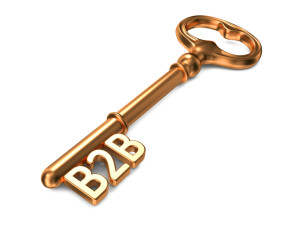by Glen Springer | Jan 31, 2014
 We all know that submitting a contact form, requesting a demo or consultation/review is a clear interaction and digital buying signals. However, we believe these to be verbal or explicit. The following, however, are more subtle and implicit buying signals that can be tracked (at the individual level) using marketing automation software:
We all know that submitting a contact form, requesting a demo or consultation/review is a clear interaction and digital buying signals. However, we believe these to be verbal or explicit. The following, however, are more subtle and implicit buying signals that can be tracked (at the individual level) using marketing automation software:
1. Repeat visits to your pricing page is the one of the clearest website interactions that indicates a buying decision.
Learning the price/cost involved is an obvious steppingstone in the sales process, one that has value to qualifying a prospect. Finding out the price up front, you are using it as a pre-qualifier. If someone checks your price and never returns, they’ve disqualified themselves – saving your sales team time. If a prospect checks your pricing page and then views more pages (and/or is a repeat visitor) they positively qualified themselves for next steps.
2. Navigating through a visitor flow that simulates your 3-5 call sales process.
This means content like your pitch video, about us page, features and benefits pages, webcasts, contact page, testimonials and services pages. All of these pages support buying decisions and were once part of the introductory sales pitch. Now that buyers are self-educating, you can map their online interactions to your traditional sales process and starting checking off buying signals they need to see and understand before moving forward.
3. Returning to your website through natural search.
If it’s a branded search, this shows they remember you enough to naturally look for you again. Checking the pages they view during this return visit can provide even more insight into their buying stage. If an identified prospect returns to your site through non-branded natural search (and the keyword is unavailable as much of it is today), it still shows a buying signal as they are in an active state of research (multiple visits). Again, deep dive into the specific pages from this return visit to better understand where they are.
4. Viewing your company’s executives social media profiles (especially LinkedIn).
At this point, prospects are usually asking “is this person qualified, and do I want to work with them?” This is different than viewing or following your company profile, where that may only be someone wanting to continue to be educated on the space (or they are your competitor and are mining your content).
5. An email has been opened and clicked numerous (6 or more times) indicating that an item has been shared and viewed internally.
Related to this, watch for multiple hits to same piece of content over multiple days by the same prospect. Since buying decisions require multiple opinions now, these positive buying signals show that the parties that need to be involved in the sale are becoming involved.
6. Downloading case studies, especially ones where the case study is in a comparable vertical.
Viewing these case studies not only provides social proof, but also indicates the prospect wanting a deeper analysis and understanding to see that what you provide (products/services) can work for them, too.
7. Re-watching videos or specific sections of videos.
Analyzing video heat maps show when videos or sections of videos have been re-watched. To best understand this buying signal, you’ll often need to look a little deeper at the section they are re-watching to be sure that the part that was reviewed is your value prop/business case/sales pitch/specific product feature and not industry education/general info.
If you are in sales or marketing, you know by now that the buying process has changed. Prospects are self-educating online and engaging in sales once they’ve “bought” what you offer. Using marketing automation software, you can more accurately assess a prospect’s stage in the buying process through non-verbal, digital interactions with your content (“content” being a very broad categorization of emails, webpages, social profiles, etc.).
For more on how a marketing automation platform can help sales, click here. Feel free to contact us with any questions.
by gabriel_sales | Jan 30, 2014
 Answer: A lack of consistency.
Answer: A lack of consistency.
In today’s fast-paced and technology obsessed world, it has been estimated that people are exposed to 3,000-20,000 marketing messages per day (NYT).
While that estimate seems rather high, it highlights the sheer enormity of marketing content out there—all competing for our attention and clicks. In this chaotic and competitive environment, how do you create content that stands out enough to get your prospects to convert and/or buy?
You create an authentic brand story, and then tell that story consistently across multiple channels.
Telling a consistent brand story does not mean saying the exact same words over and over again in all of your marketing content. It means creating a consistent impression or experience for your prospect every time they interact with your company. Saying the same words multiple times may play a part in that, but there are also many other factors go into creating consistency for your prospects.
Let’s look at an example of an inconsistent brand story experience to illustrate the importance of consistency.
Let’s say George receives a marketing email from a managed service provider. The email has little in the way of color or graphics; the content of the email is educational, and the tone of the writing is serious and professional. George reads the email and decides to click through to the additional content being offered, as he is someone who highly values professionalism in the workplace.
However, when George clicks through to the MSP’s content, he finds a page with neon colored graphics, pushy advertisements and informal language. At first, George is so confused that he wonders if he even clicked on the right link. After confirming the MSP did indeed send him to this flashy, ad-covered web page, George is left even more puzzled.
He wonders which of the two experiences the company actually provides. One story being told insinuates the MSP is an industry thought-leader and approaches their work with a high level of professionalism and seriousness. The other story implies the MSP cares more about aesthetics and has more of a bold, ‘in-your-face’ type of approach to business.
Only one of these stories is appealing to George. But, because he cannot figure out which of the stories is true just by viewing the content, he is going to move on to a competitor who provides him with a less confusing—and more consistent—brand experience.
While George’s story is fictional, the problem of inconsistent marketing and sales content is real and may cause you to miss out on revenue opportunities. To make the brand story your are telling more consistent, pay attention to:
- your tone of voice
- your level of formality
- the colors, graphics and other visuals you use
- your communication frequency
- the connotations of the words you use
- your social media posting style
By providing a more consistent brand experience for your prospects throughout the length of your sales process, they will be much more willing to trust you and therefore eventually, make a purchase.
To learn more about improving your B2B sales process, read “3 Reasons Your B2B Sales is Failing”. Feel free to contact us with any questions.
by gabriel_sales | Jan 22, 2014
 By now, most companies in the B2B space are blogging. According to a 2014 marketing report, the percentage of companies adopting blogging as a B2B content marketing strategy went up 11% from 2012.
By now, most companies in the B2B space are blogging. According to a 2014 marketing report, the percentage of companies adopting blogging as a B2B content marketing strategy went up 11% from 2012.
Because stuffing your blogs with keywords is no longer effective for SEO or sales, blogs in 2014 will continue on the trend towards more quality content. In addition to providing quality, here are three things to add to your B2B blogs in 2014 to help improve engagement and conversion:
1. Videos
As we’ve written about previously, 2014 is going to be a big year for video marketing. In terms of blogging, videos can help extend the message of your written text into a visually engaging format.
There are several good ways to add a video to a blog. You can do a video-focused style post, where the video is at the top and the written text is a brief summary of the content that can be found in the video. Some people may call this a vlog (video+blog). Another good option is to add a video to give an in-depth example of something referred to in the text. This is great when you are talking about something like a complicated technical process that can be better understood through visuals; and IT Business Edge recently stated 70% of B2B buyers view product demo videos before they select a vendor.
2. Social proof
In the new, buyer-dominated world of marketing, social proof is only going to rise in importance. One reason for this is that buyers are trusting each other’s opinions more and more and companies’ ‘opinions’ less and less.
In blogs, there are several ways you can demonstrate social proof. The first is attaching social sharing buttons to each post; you can see an example of this at the top of this post. You can also post blogs with customer testimonials or reviews. This allows your customers tell your story for you, and is a great way to help build trust early on in the sales cycle.
3. Second-stage content
For the most part, B2B blogs are pretty basic and can be easily scanned through in a matter of minutes. If your blogs are being used for brand awareness, early stage education lead generation, shorter and more basic blogs make sense, as you do not want to overwhelm your reader early on.
However, for both SEO and sales strategy, you may want to consider adding more in-depth blog content every once in a while. In regards to SEO, while the old ‘keyword’ focused Google algorithm sometimes rewarded short, keyword-dense blogs, the new Hummingbird algorithm is geared toward finding more quality, in-depth content. If there is something happening in your area of expertise, write a feature type article on it rather than a 300-500 word summary.
In terms of sales, having more substantive second-stage blogs can help with conversion. Because many B2B buyers now like to take themselves through the entire buying process on their own, they will thank you for giving them the detailed content that allows them to do that. If a prospect can find everything they need to make a buying decision on your site (educational content, product comparisons, technical demos, details on the engagement process, testimonials, etc.), they may not have any reason to look at other options.
For more tips on B2B blogging, read, “B2B Blogging – Why It’s a Double Win”. Please feel free to contact us with any questions.
by gabriel_sales | Jan 14, 2014
 For many B2B companies, a gigantic sales staff is not in their arsenal. This is understandable; many B2B companies are small and have to stretch the resources they do have. Because of this, the CEO sometimes ends up taking on the role of the entire sales department, from the junior rep who does cold calls to the senior executive that closes.
For many B2B companies, a gigantic sales staff is not in their arsenal. This is understandable; many B2B companies are small and have to stretch the resources they do have. Because of this, the CEO sometimes ends up taking on the role of the entire sales department, from the junior rep who does cold calls to the senior executive that closes.
From our experience selling B2B products and services for the past 13 years, we have found that there are several issues with this approach.
It may seem like a good idea to have your CEO selling through the entire sales process, as he knows the most and is the most senior. But in reality, he does not belong selling at the front of the pipe. It is like walking through the front door of a business and seeing the CEO sitting at the receptionist desk. It just doesn’t feel right.
This is because selling this way creates issues with perception. If your CEO is the first person a prospect interacts with at your company, he or she may be left wondering, “Is there no one else working there that can take my call?” or “Why isn’t someone else doing this?”
Additionally, this practice is inefficient in regards to business. If your CEO is selling to every prospect that comes in the pipe, he is going to spend a lot of time selling to people who are simply kicking tires. Because your CEO is your highest value employee, having him sell to people who are not really interested equates to a lot of time and money wasted.
The reality of B2B sales today is in the early stages of the sales process, prospects simply want to know you understand their problem as they explore their solution options and short list preferred vendors. When a prospect is new to the sales pipeline, they may be quite overwhelmed by their problem. A senior executive may exacerbate this feeling by speaking beyond the prospects grasp of the issue, moving to quickly or just creating an environment where the prospect is overwhelmed with jargon, numbers and statistics. Regardless of the situation, no one likes to feel like they are way behind.
Here are our suggestions for an alternative approach:
- Hold your CEO back in the early stages of selling and use his expertise and passion as a closing tool.
- Clone your CEO’s early-stage sales efforts into digital content that can be shared one-to-many by more junior employees
- Use your CEOs expertise when other executives are at the table who are peers and speak the same ‘language’
This approach does several things. First, it increases your bandwidth for selling by enabling you to engage with many people simultaneously. It also allows you to determine what parts of your sales or marketing process are working and what aren’t. Finally, it allows your highest value employee to focus on your highest value activities—closing, delivering and growing the business.
For more B2B sales tips, read “3 Reasons Your B2B Sales is Failing”. Please feel free to contact us with any questions.
by gabriel_sales | Jan 7, 2014
 As a quick Google search will tell you, the complexity of B2B sales outsourcing is increasing dramatically as we move more and more into a digitally-driven world. In this new world of digital sales tools, marketing automation and customer relationship management, it takes more than a good cold call script to close a deal.
As a quick Google search will tell you, the complexity of B2B sales outsourcing is increasing dramatically as we move more and more into a digitally-driven world. In this new world of digital sales tools, marketing automation and customer relationship management, it takes more than a good cold call script to close a deal.
Scaling your business in this environment is going to take a commitment to smart technology use, authentic storytelling and a strategized sales process. Because many B2B companies do not have a marketing automation expert, a trained journalist and a highly experienced sales team on staff, they now are looking to external resources for support.
When it comes to B2B sales outsourcing and marketing, the right solution for any company is going to depend on their existing gaps and current goals. Some companies may only need help with technology implementation (marketing automation consulting), some have struggles that are on a more strategic level, and others need support through execution (content production).
Here are three ways a sales and marketing outsourcing company can provide value to a company looking to scale:
1. Go-to-Market/Market Validation Consulting
Before attempting to scale any kind of business, it is necessary to have a clear picture of your market and your ideal customer profile. With go-to-market strategy or market-validation consulting, you can leverage expert research and advice and test your markets, message and solution before committing to sales and marketing budgets. By paving the way for success beforehand, you can eliminate time spent chasing bad tactics and unnecessary development cycles and instead focus on campaign refinement and optimization.
2. Pipeline development via staff augmentation
Many times, scaling a business is about having the right people on board. By leveraging an outsourced sales and marketing team, you get access to a highly experienced group of experts you likely could not afford to hire internally. This team can help you with all parts of sales pipeline development including content production, email nurturing, SEO, database management, etc.
3. Measurement and reporting
As a service provider, every outsourced sales and marketing team should be accountable for the work they do. As a B2B company looking to scale, the detailed measurement and reporting an outsourced team provides can be extremely valuable. While we cannot speak for every outsourced sales and marketing company, at Gabriel Sales, we provide our clients with twelve different types of reporting on our efforts—from data on conversion ratios to verbatim transcripts of cold calls—and have weekly meetings to discuss our successes and areas for improvement. This increased level of transparency gives companies the ability to better forecast and understand where and how to optimize as they scale.
To learn more about the value of B2B sales outsourcing and marketing, read How an Outsourced Sales Team Can Help Your Marketing Team or 5 Advantages for B2B Sales Outsourcing in 2014. If you are interested in learning more about what we do, you can visit our services page.
Feel free to contact us with any questions.
by gabriel_sales | Jan 3, 2014
How to use social proof to your advantage in b2b sales
This is the second part of a series on social proof in B2B. To read part one, titled, “Why is Social Proof Effective in Marketing?”, click here.
Tips for Using Social Proof in B2B
Social proof5 is a little bit harder to demonstrate in B2B than it is in B2C; a midlevel office software management software is never going to have the “likes” or “followers” that Apple does. However, there are still many ways for B2B companies to leverage the immense power of social proof6 in the buying process; below, we discuss three.
Use social proof7 with language
Not all social proof8 has to be blatantly obvious. You can incorporate subtle messages into the language of your sales and marketing content that hint at your customers’ high level of satisfaction. For example, in an email, say something like, “ 300 customers agree that our solution is the best for . . .” or “Our 99% customer retention rate tells us . . .” to help put customers at ease by giving them a reason to believe you are both credible and trustworthy.
It is best to be as specific as possible to help strengthen the credibility and similarity (in relation to your prospect) you are perceived to have. For example, the sentences above could be changed to “300 of New England’s law firms agree that our solution is the best for . . .” and “Our 99% retention rate of Fortune 500 companies tells us . . .”. These may seem like small details, but they can have a significant impact in helping you earn a prospect’s trust.
Use social proof9 with visuals
B2B companies can also leverage social proof10 through a variety of visual tactics. If your company has clients who are well-respected and well-known, featuring their logos on your website and throughout sales and marketing content is a great way to demonstrate credibility. You can also ask your clients to record video testimonials where they talk about the value your product/service brought to their company. For a CEO in the midst of a purchase decision, seeing another CEO (who is perceived to be both similar and credible) give his opinion on your product or service can be extremely persuasive.
If you are unable to get your clients on camera, you can use pictures instead. Seeing a face next to a written testimonial has been shown to help increase the likelihood of the testimonial being believed.
Use social proof11 with stories
Despite the enormous amount of statistical data now at our fingertips, humans are still much more persuaded by stories. It is not that we don’t like or don’t trust numbers, we just need something more to be genuinely persuaded. Susan Weinschenck, author of Neuro Web Design: What makes them click, explains, “If you want people to act on the data, then you need to couple it with emotional data.” Stories provide this emotional data and when used correctly, can be very powerful in changing consumer opinion and behavior.
To use stories as social proof12 through B2B marketing content, ask your customers to explain a specific time when you were able to help them or describe what the start-up/implementation process was like. By asking them how they felt while working with you, you may get a more emotional and therefore more persuasive response. Here’s an example of an ideal B2B story testimonial:
“My boss was breathing down my neck as I was trying to find a solution for X. He said he wanted something next week, and everything I was looking at seemed either poor quality or too expensive. I was desperate. When I found Company Z, the team was extremely helpful and worked with me to get everything set up running smoothly within three days! My boss hasn’t stopped thanking me since.”
Emotional stories like this are a great form of social proof13 for two reasons. First, they allow prospects to see that another person felt the pain they now feel during the buying process. Second, they allow prospects to imagine the relief and accomplishment your customer felt when they chose you as a solution. By creating emotional associations and connections, stories carry influence that data cannot compete with.
For more on why emotional connection matters in B2B, click here. Feel free to contact us with any questions.
 We all know that submitting a contact form, requesting a demo or consultation/review is a clear interaction and digital buying signals. However, we believe these to be verbal or explicit. The following, however, are more subtle and implicit buying signals that can be tracked (at the individual level) using marketing automation software:
We all know that submitting a contact form, requesting a demo or consultation/review is a clear interaction and digital buying signals. However, we believe these to be verbal or explicit. The following, however, are more subtle and implicit buying signals that can be tracked (at the individual level) using marketing automation software:





